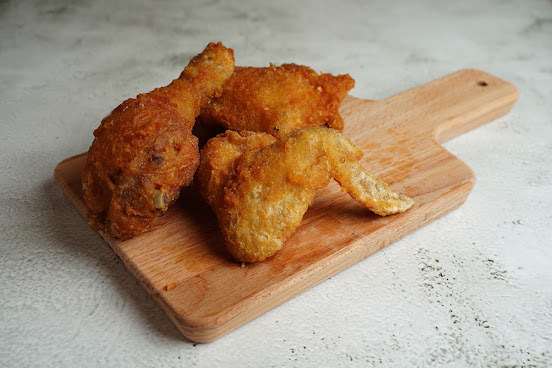Cleaning A Cast Iron Skillet With Vinegar – The Quick and Easy Method
 |
| cast iron skillet |
Cast iron skillets are a favorite among home cooks and chefs for their unique, non-stick properties. Cast iron skillets can last quite a long time–in some cases, for decades–provided you take care of them. That said, it’s important to know how to clean your cast iron skillet in order to keep it in good condition. In this blog post, we will show you how to clean a cast iron skillet with vinegar.
What is Cast Iron?
Cast iron skillets are some of the most versatile and durable cookware available. They can be used for everything from frying eggs to making roast beef. Cast iron is also a great option for those with allergies to non-stick materials, as it's not porous and doesn't require any special care.
When it comes cleaning a cast iron skillet with vinegar all you need is a little vinegar. Pour about 2 tablespoons of white vinegar into the pan and heat it up on medium heat. Use a wooden spoon to scrape the burning residue off of the surface of the pan. Repeat as needed until the pan is clean. Remember to season your pan after each use by rubbing a bit of vegetable oil or bacon grease onto the surface.
How to Clean a Cast Iron Skillet
Cast iron skillets are some of the most versatile cooking vessels around and can be used for a variety of purposes, from frying eggs to making breakfast sandwiches. However, like any other type of cookware, cast iron skillet require regular cleaning in order to ensure that your food comes out tasting great.
To clean your cast iron skillet, start by pouring 1-2 cups of white vinegar into the pan and place it on the stove over high heat. Let the vinegar come to a boil before turning the heat down to medium and stirring constantly. Let the skillet soak in the vinegar for at least 30 minutes or up to 12 hours. After soaking, remove the skillet from the vinegar mixture and rinse it with cool water. Pat dry with a paper towel. To season your cast iron skillet, add a teaspoon of vegetable oil or cooking spray to the pan and heat until hot. Then place your food in the pan and cook according to your desired recipe
Related Post: Top Affordable Dishwashers Can Save You So Much Money
Vinegar as an abrasive
When it comes to cleaning a cast iron skillet with vinegar, you'll want to make sure that the heat is turned off before starting. Add one cup of white vinegar to a large pot and set it on medium-high heat. Once the pot begins to simmer, place the cast iron skillet inside and scrub away with a wire brush. Be sure to use plenty of hot water and soap to clean the pan; once it's spotless, rinse it thoroughly with cold water. Finally, dry it off with a towel.
Cast Iron Skillet Maintenance
Cast iron skillets are some of the most versatile and durable cookware around. They can be used for everything from frying eggs to cooking a big batch of chili. However, like all cast iron cookware, regular care and maintenance is necessary to keep them in great condition.
One common issue with cast iron skillet is rust. If your skillet isn't seasoned properly, salt won't help to protect it from rusting and it will eventually develop into a serious problem. To prevent this from happening, you need to apply a good layer of oil or fat before each use. This will help prevent the metal from oxidizing and developing rust.
Other common issues with cast iron skillets include sticking and uneven heating. If your skillet is sticking, it might be because of dirty surfaces or build-up on the pan bottom. To fix this issue, you can use a non-stick cooking spray or butter. If your skillet is unevenly heating, it might be because of bad heat distribution or corrosion on the pan top. In this case, you'll need to clean the top of the pan using a scrubby sponge and hot water. Finally, if you notice any rusting or corrosion on the metal itself, you'll need to take it in for repair or replacement.
Conclusion
Cleaning a cast iron skillet with vinegar is an effective way to remove food residue and surface rust. Pour white vinegar into the pan, place it on the stove over medium heat, and wait until the vinegar begins to steam. Use a clean cloth to scrub the pan clean; be sure to get into all of the crevices. After cleaning, dry the skillet with a paper towel.



Comments
Post a Comment